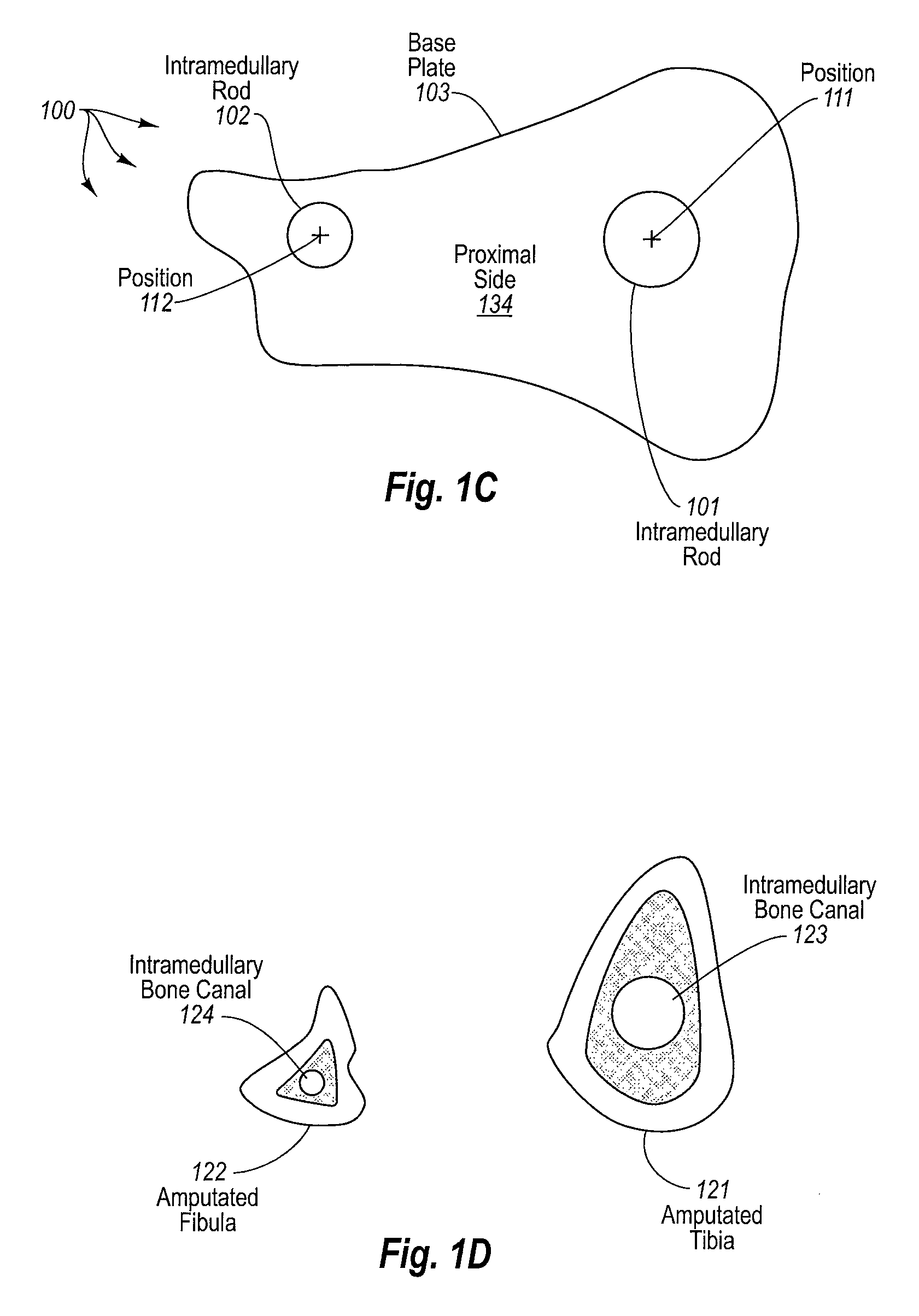Amputation stabilization device
a stabilization device and amputation technology, applied in the field of amputation stabilization devices, can solve the problems of further medical complications, inability to bear additional loads, and inability to anatomically design tissues to support additional loads
- Summary
- Abstract
- Description
- Claims
- Application Information
AI Technical Summary
Benefits of technology
Problems solved by technology
Method used
Image
Examples
Embodiment Construction
The present invention extends to an amputation stabilization device. In some embodiments, a dual stemmed amputation implant includes a first intramedullary rod and a second intramedullary rod. The first intramedullary rod is configured for insertion into the distal end of the tibia of an amputated leg. The second intramedullary rod is configured for insertion into the distal end of the fibula of the amputated leg. The dual stem implant also includes a base plate having a proximal side and a distal side.
The base plate is mechanically connected to the first intramedullary rod and to the second intramedullary rod. The first and second intramedullary rods extend out of the proximal side of the base plate. The position of the mechanical connection of the first intramedullary rod on the base plate relative to the position of mechanical connection of the second intramedullary rod on the base plate is configured to maintain appropriate separation between the tibia and fibula when the first ...
PUM
 Login to View More
Login to View More Abstract
Description
Claims
Application Information
 Login to View More
Login to View More - R&D
- Intellectual Property
- Life Sciences
- Materials
- Tech Scout
- Unparalleled Data Quality
- Higher Quality Content
- 60% Fewer Hallucinations
Browse by: Latest US Patents, China's latest patents, Technical Efficacy Thesaurus, Application Domain, Technology Topic, Popular Technical Reports.
© 2025 PatSnap. All rights reserved.Legal|Privacy policy|Modern Slavery Act Transparency Statement|Sitemap|About US| Contact US: help@patsnap.com



